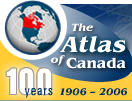|
The proportion of the visible minority population has increased steadily over the past 20 years. In 1981, 1.1 million visible minorities accounted for 4.7% of the total population; by 1996, 3.2 million accounted for 11.2%.
The visible minority population is growing much faster than the total population. Between 1996 and 2001, the total population increased 4%, while the visible minority population rose 25%, six times faster. Between 1991 and 1996, the total population increased 6%, while the visible minority population rose 27%. The growth in the visible minority population during the last several decades was largely a result of immigration patterns.
The Daily is Statistics Canada's official release bulletin. The Daily for January 21, 2003, marked the public release of this census variable. Highlight tables allowing users to perform simple rank and sort functions with the data at various levels of geography are available for this variable here: Ethnocultural Portrait of Canada: Highlight Tables, 2001 Census. Technical notes for this variable can be found at 2001 Census Technical Reports and User Guides.
The text was adapted from Statistics Canada, Canada’s ethnocultural portrait: The changing mosaic, Catalogue number 96F0030XIE2001008. Statistics Canada information is used with the permission of Statistics Canada. Information on the availability of the wide range of data from Statistics Canada can be obtained from the Statistics Canada’s Regional Offices, its World Wide Web site at: www.statcan.ca, and its toll-free access number 1-800-263-1136.
Please read the following Data and Mapping Notes for information on how the map was derived. |
